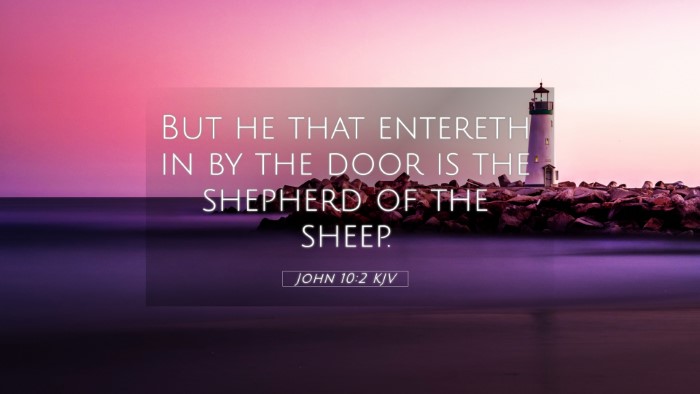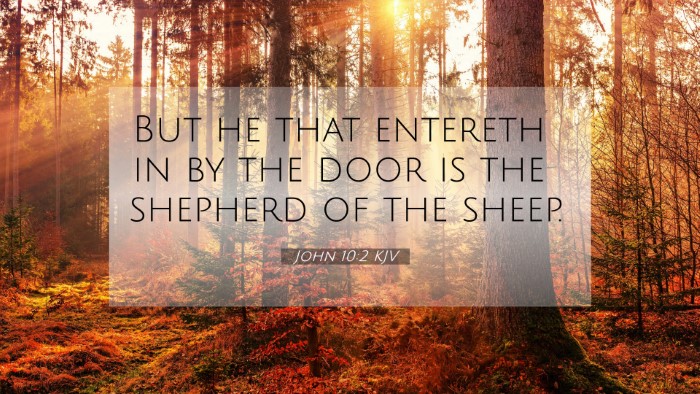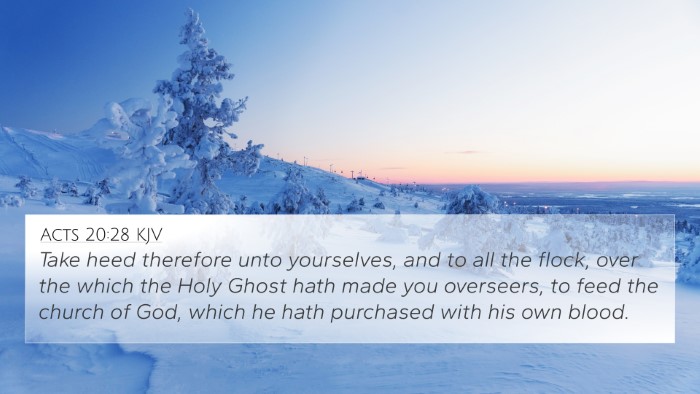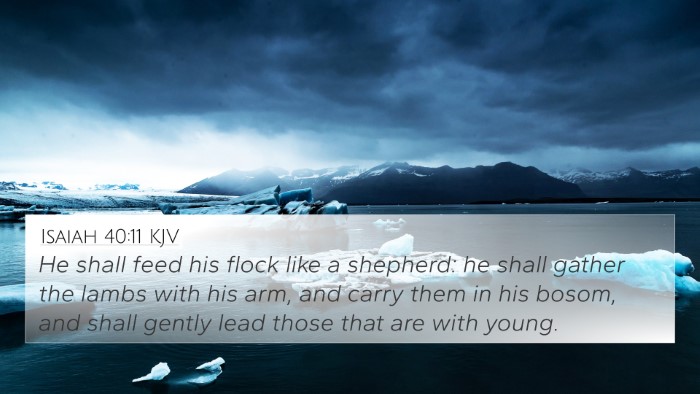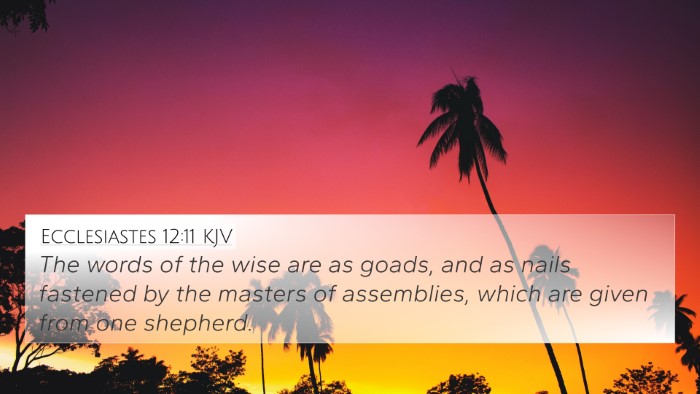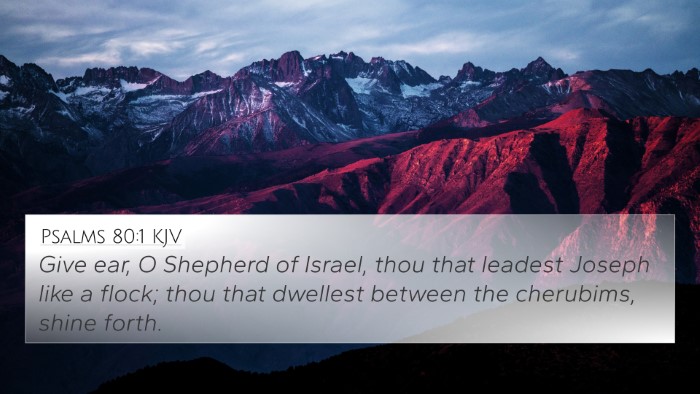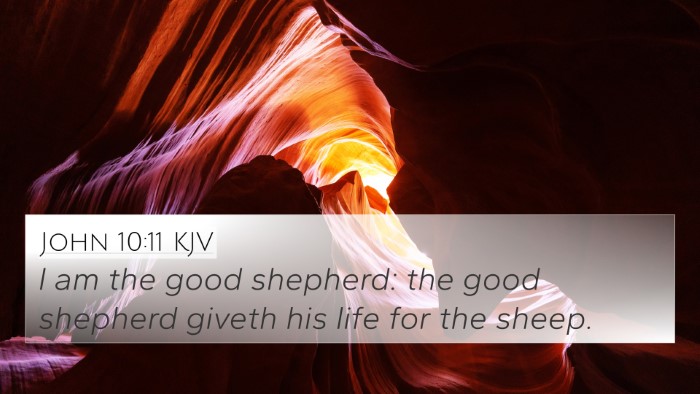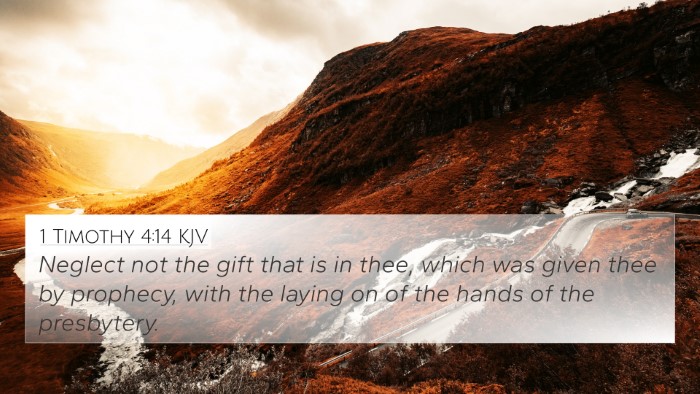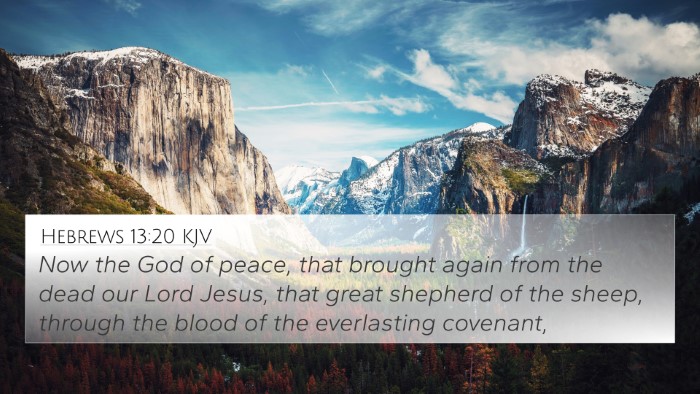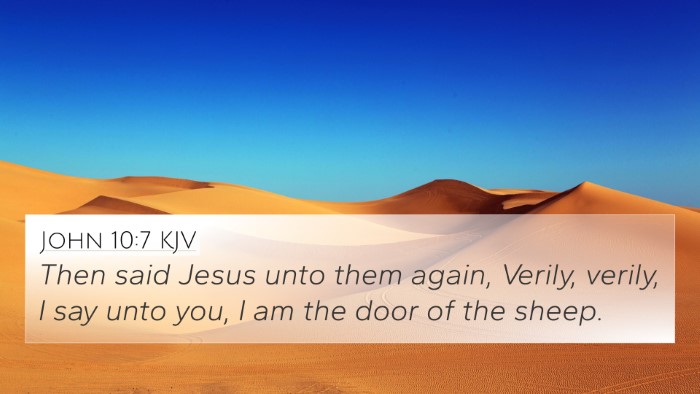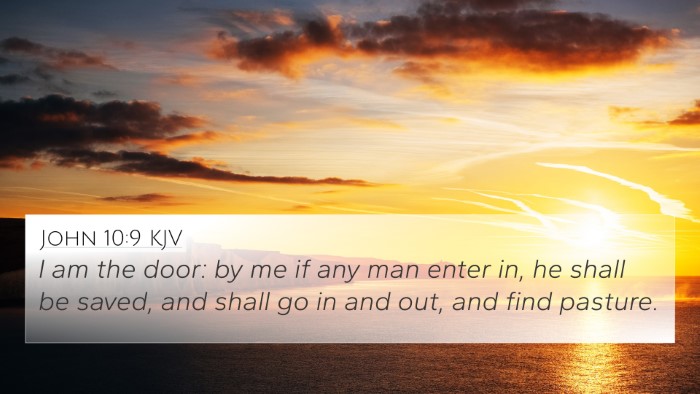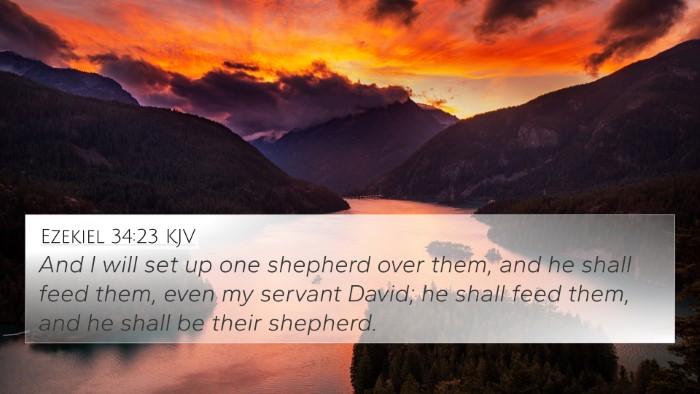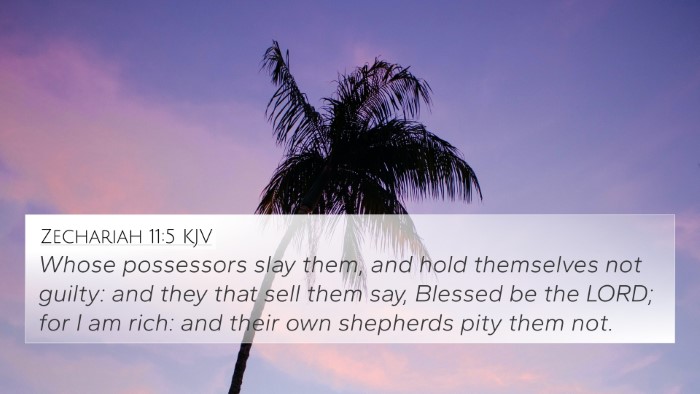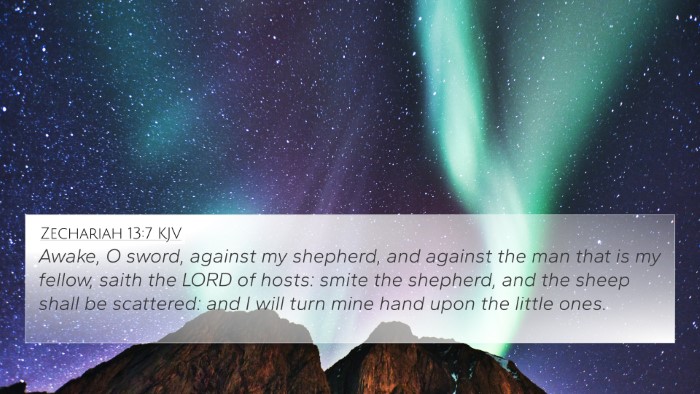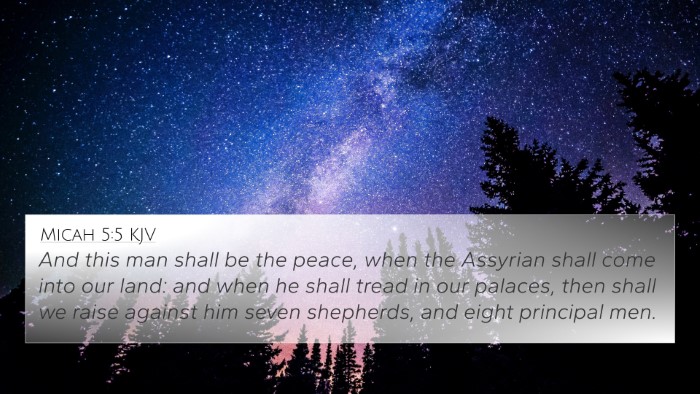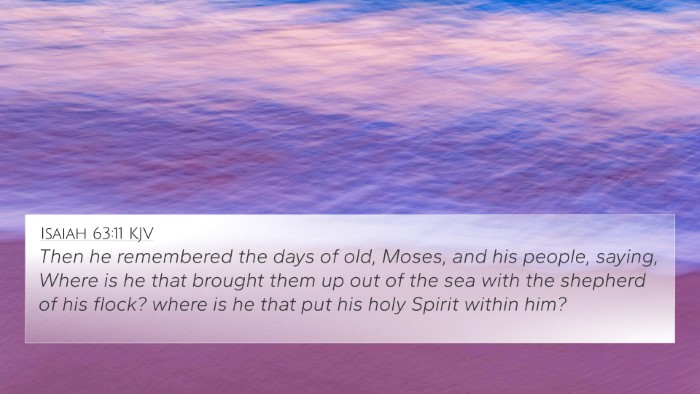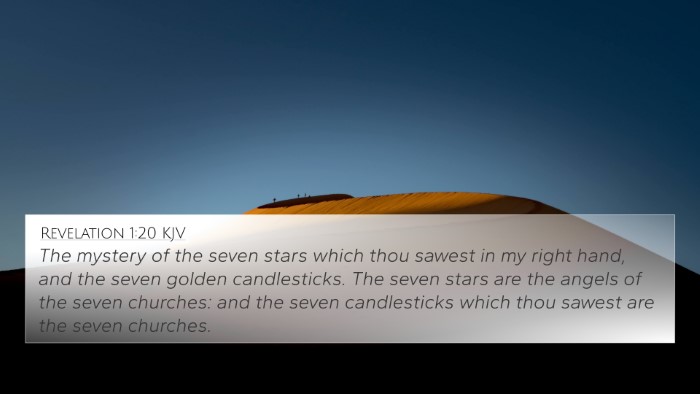Understanding John 10:2
John 10:2 (KJV): "But he that entereth in by the door is the shepherd of the sheep."
This verse plays a crucial role in the broader narrative of Jesus as the Good Shepherd, representing His rightful authority and role in the lives of His followers. Here, we explore interpretations and insights from various public domain commentaries, including those of Matthew Henry, Albert Barnes, and Adam Clarke, to uncover the depth of its meaning.
Verse Overview
In this verse, Jesus highlights the distinction between legitimate leadership and false authority. The door symbolizes access to the sheep, emphasizing that only the true shepherd can enter through it. This metaphor beautifully illustrates Jesus' relationship with His followers.
Commentary Insights
Matthew Henry
Matthew Henry emphasizes that the "door" signifies Christ Himself and the pathway He provides for His flock. The shepherd's entry through the door symbolizes the authenticity and divine appointment of Jesus as the leader of His people. Henry also draws connections to the Old Testament, where God is depicted as the shepherd of Israel, highlighting the continuity in scripture regarding divine leadership.
Albert Barnes
Albert Barnes offers a practical interpretation, noting that the verse delineates the nature of true shepherding. He points out the importance of the shepherd's relationship with the sheep, illustrating that those who enter through the door have the care and protection of the shepherd. Barnes frequently cross-references this passage with Ezekiel 34, discussing themes of shepherding and leadership.
Adam Clarke
Adam Clarke provides insights into the cultural context of shepherding in ancient Israel. He explains that the practice of opening the door for the shepherd was a customary part of sheepfold management. Clarke also discusses the significance of the shepherd's familiar call and the recognition by the sheep, which illustrates the intimate relationship between Jesus and His followers. He interlaces this with various Old Testament scriptures, reinforcing the prophetic foreshadowing found in Isaiah 40:11 and Jeremiah 31:10.
Cross References
This verse is part of a rich tapestry of scripture that interconnects various biblical themes. Below are 10 key cross-references that relate to John 10:2:
- Psalm 23:1: "The LORD is my shepherd; I shall not want." - This verse sets the foundation for the shepherd motif in scripture.
- Isaiah 40:11: "He will feed His flock like a shepherd; He will gather the lambs with His arm." - Foreshadows Christ's gentle guidance.
- Ezekiel 34:23-24: "And I will set up one shepherd over them, and he shall feed them, even my servant David." - Connects the shepherd role to Jesus.
- Matthew 9:36: "But when He saw the multitudes, He was moved with compassion for them, because they were weary and scattered, like sheep having no shepherd." - Highlights the need for a true shepherd.
- John 10:11: "I am the good shepherd: the good shepherd giveth his life for the sheep." - Reinforces the sacrificial nature of Christ's leadership.
- Hebrews 13:20: "Now the God of peace, that brought again from the dead our Lord Jesus, that great shepherd of the sheep..." - Declares Jesus as the eternal shepherd.
- 1 Peter 5:4: "And when the chief Shepherd shall appear, ye shall receive a crown of glory that fadeth not away." - Affirms believers’ hope in the shepherding of Christ.
- Revelation 7:17: "For the Lamb which is in the midst of the throne shall feed them, and shall lead them unto living fountains of waters..." - Points to eschatological fulfillment of the shepherd role.
- John 10:3: "To him the porter openeth; and the sheep hear his voice: and he calleth his own sheep by name." - Emphasizes the personal relationship between the shepherd and the sheep.
- Matthew 18:12-14: "How think ye? if a man have an hundred sheep, and one of them be gone astray..." - Illustrates the diligent care of the shepherd for all of his sheep.
Thematic Connections
This verse serves as a foundational point for numerous thematic discussions within scripture. The role of Jesus as the Good Shepherd encompasses pivotal aspects such as:
- Authority and Authenticity: How Jesus claims rightful leadership through fulfilling prophecies.
- Care and Compassion: The intimate relationship between the shepherd and the sheep demonstrates divine love and diligence.
- Protection and Provision: The responsibilities of a shepherd in guarding against harm and providing for needs.
- Fulfillment of Prophecy: Connections to Old Testament prophecies about shepherding leading to Jesus’ arrival as the Messiah.
Tools for Bible Cross-Referencing
To delve deeper into spiritual understanding, tools for effective cross-referencing can enhance your Bible study. These may include:
- Bible Concordance: Helps locate verses related to specific words or themes.
- Cross-Reference Bible Study Guides: Offers structured methods for studying thematic connections.
- Bible Reference Resources: Consist of commentaries, dictionaries, and online databases for cross-referencing.
Conclusion
John 10:2 encapsulates crucial themes of leadership, relationship, and care within the framework of Jesus' message to humanity. Understanding this verse invites a comprehensive reflection on the nature of Christ as the Good Shepherd and encourages further exploration of biblical texts through cross-referencing. This interconnectedness in scripture enriches our faith and enhances our interpretation of Jesus’ role as shepherd in our lives.

